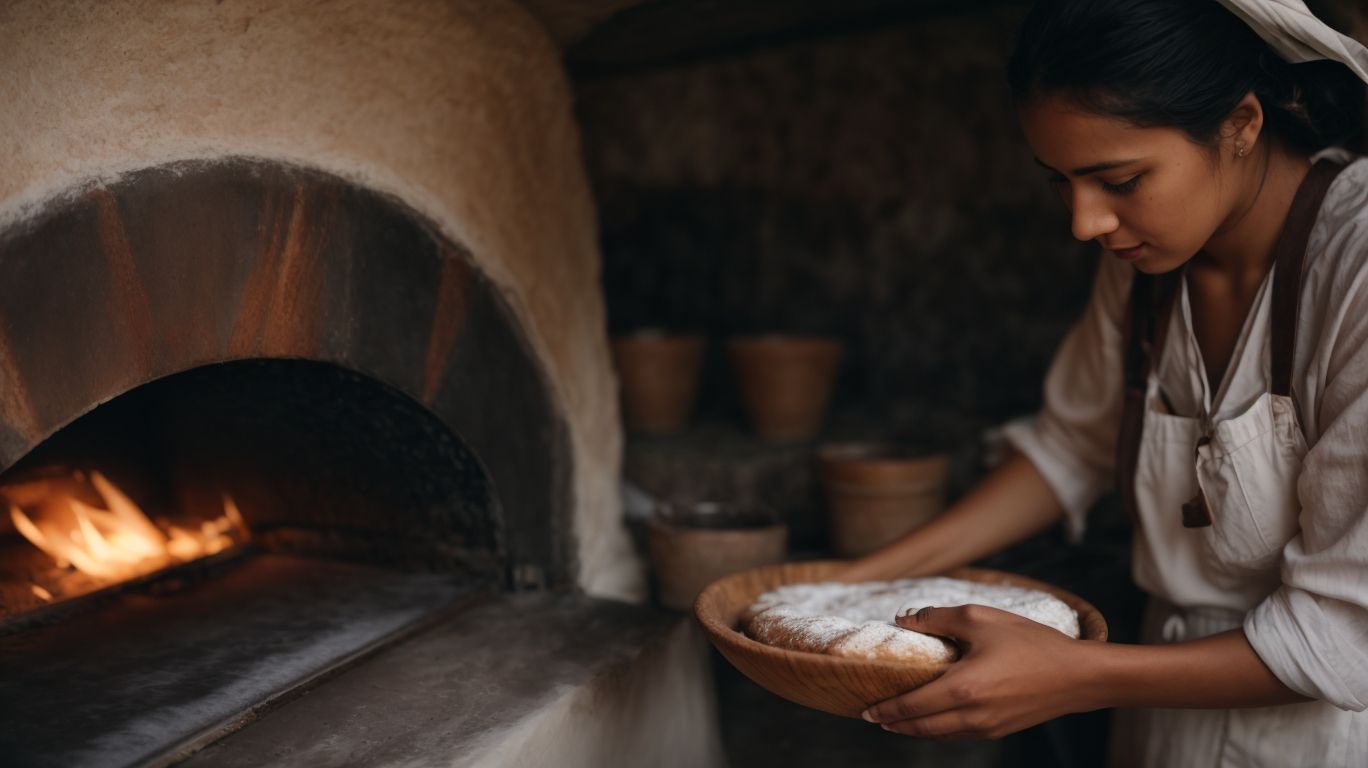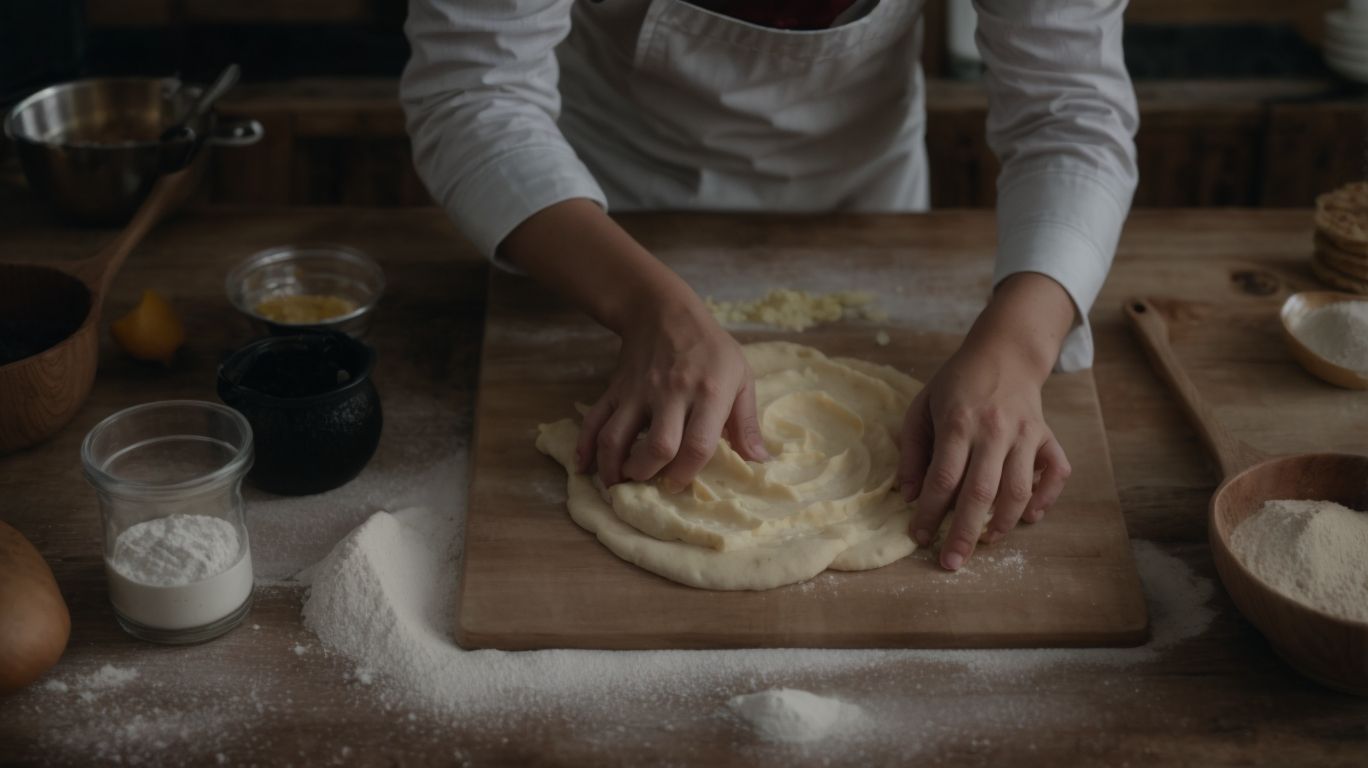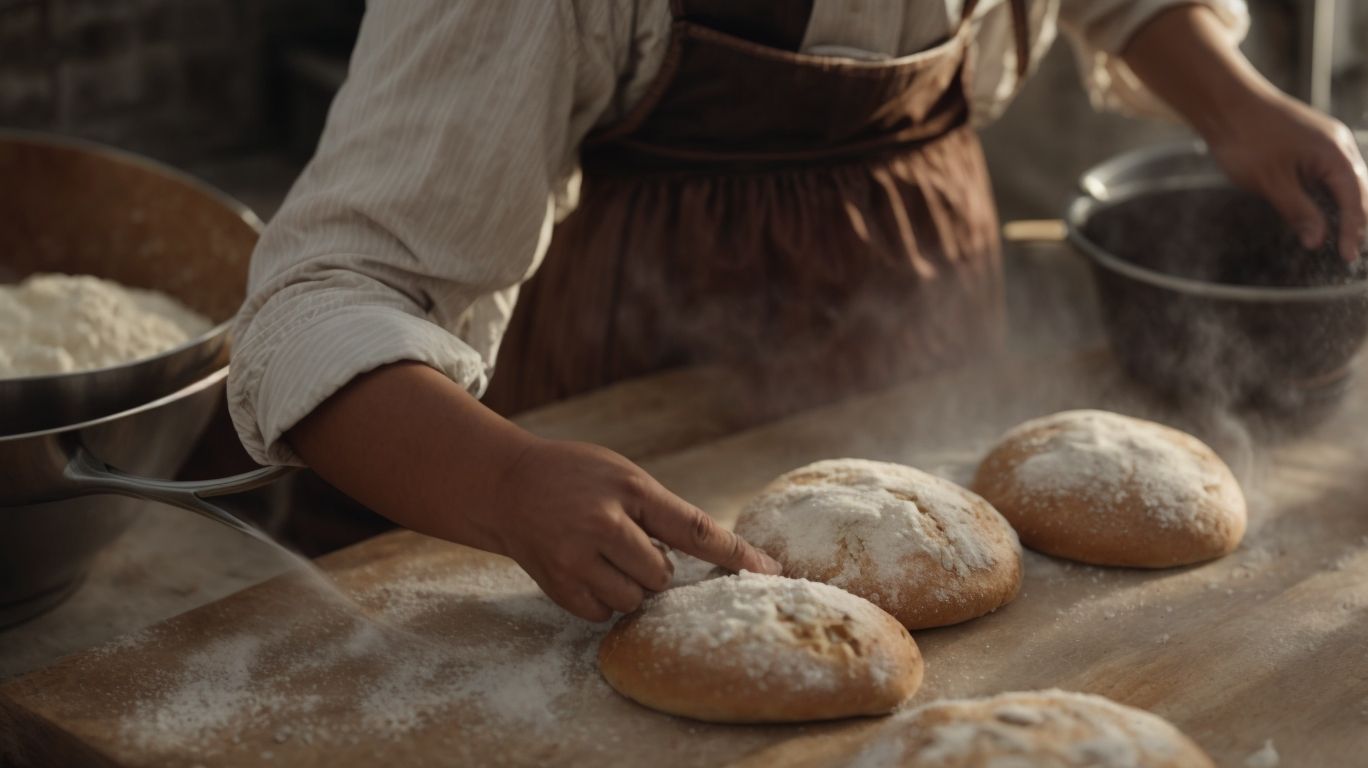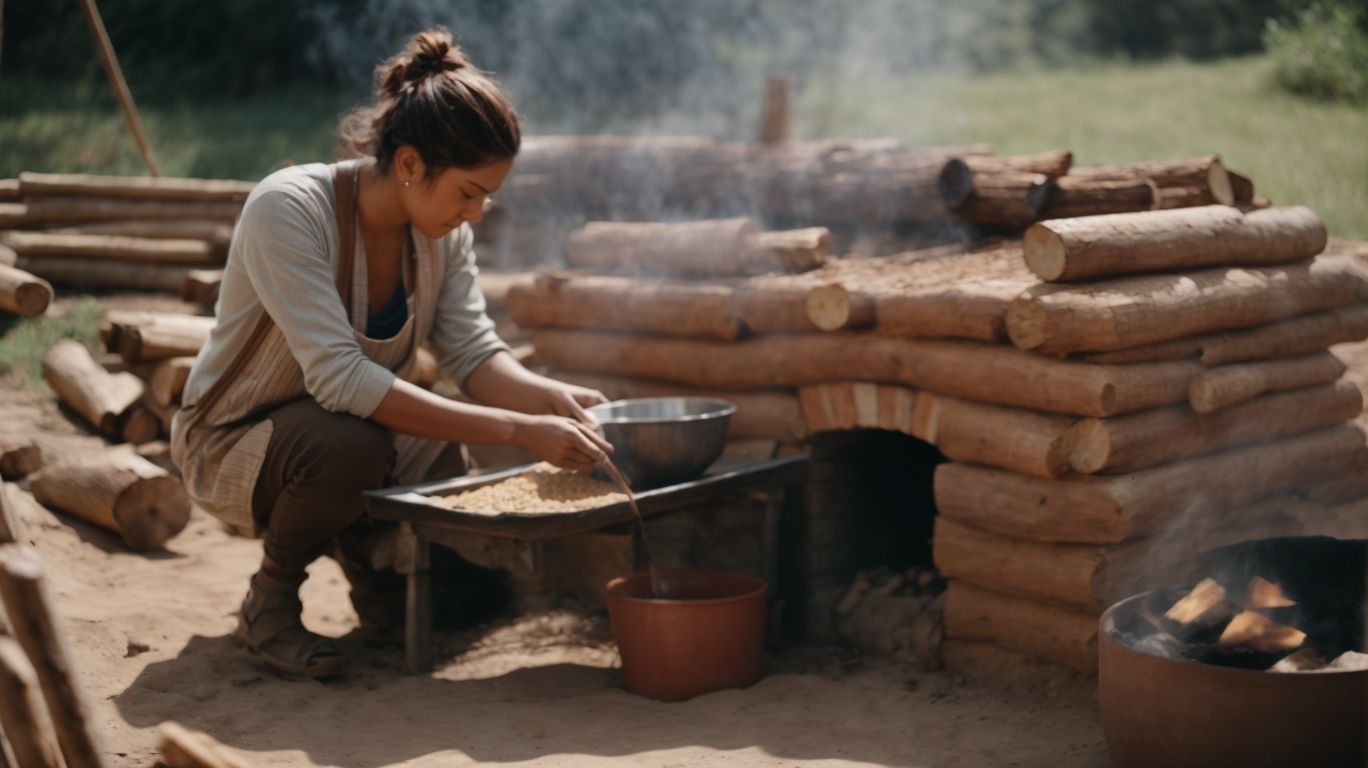How to Bake Bread Without Electricity?
In a world reliant on modern conveniences, knowing how to bake bread without electricity can be a valuable skill. Whether you’re preparing for emergencies, looking to save money, or simply enjoy the process of baking, this guide has got you covered.
From the necessary ingredients and tools to a step-by-step baking process, we’ll walk you through everything you need to know.
So grab your apron and get ready to discover the joy of baking bread the old-fashioned way!
Key Takeaways:
Why Bake Bread Without Electricity?

Credits: Poormet.Com – Joseph Hernandez
Baking bread without electricity is essential, especially in survival situations where power sources may be unreliable or unavailable.
Having the knowledge and skill to bake bread without electricity opens up a world of possibilities for self-sufficiency and emergency preparedness. In disaster scenarios or off-grid living situations, being able to whip up a delicious loaf of no knead bread without relying on electrical appliances can be a game-changer.
Not only does the ability to bake bread without electricity provide a sense of security, but it also allows for continued enjoyment of homemade bread even during power outages. By exploring alternative methods such as Dutch oven baking, solar oven techniques, or traditional hearth baking, one can adapt and thrive in challenging circumstances.
For Emergencies
Baking bread without electricity becomes crucial during emergencies such as blackouts or survival situations, where traditional methods like campfire cooking exemplify self-reliance.
In times of crisis, when power sources are limited or non-existent, being able to bake bread using alternative methods is not just a skill but a necessity. The ability to prepare food without relying on modern conveniences is an essential aspect of self-sufficiency.
Survival tactics like campfire baking tap into age-old techniques that have sustained communities for generations. By understanding and practicing these traditional methods, individuals can ensure their own nourishment and well-being even in the absence of electricity. Embracing self-reliance and preparedness in such scenarios can make all the difference between thriving and merely surviving.
To Save Money
One can opt to bake bread without electricity as a cost-effective measure, utilizing simple recipes that require basic ingredients like flour, yeast, and kosher salt.
By forgoing the use of electrical appliances like ovens, individuals can significantly cut down on their utility bills and energy consumption.
Homemade bread not only provides a cheaper alternative to store-bought options but also allows for customization according to personal preferences. With recipes ranging from classic white loaves to delicious whole wheat variations, the cost-effectiveness of baking bread at home becomes evident.
The satisfaction of creating a warm, fragrant loaf from scratch adds a touch of fulfillment to the practice, making it a rewarding experience beyond mere financial savings.
For the Joy of Baking
Beyond practicality, baking bread without electricity can be a joyful experience, allowing individuals to create artisan loaves with unique crusts and flavors.
There is a certain magic in the simplicity of mixing flour, water, salt, and yeast to form the basis of a delicious loaf. The tactile sensation of kneading the dough, feeling it transform under your hands, is incredibly satisfying. The rhythmic process of shaping the dough and waiting for it to rise can be almost meditative, providing a sense of relaxation and accomplishment.
- The aroma that fills your kitchen as the bread bakes in the oven is unmatched – warm, inviting, and promising a heavenly treat.
- Each time you pull out a perfectly golden-brown loaf with a crisp crust, you experience a surge of pride in your creation.
- The act of creating bread by hand reconnects you with centuries-old traditions, reminding you of the simple pleasures of life.
What You Need to Bake Bread Without Electricity

Credits: Poormet.Com – Kenneth Green
To bake bread without electricity, essential tools like ovens, grills, Dutch ovens, and skillets, along with appropriate heat sources, are crucial for successful cooking and baking.
Regarding equipment, a traditional brick oven stands out as a reliable choice for baking bread without electricity. These ovens retain heat exceptionally well, ensuring even baking.
Additionally, grills can be utilized with the lid closed to function as makeshift ovens–just monitor temperatures closely.
Dutch ovens and skillets, placed directly over coals or an open flame, offer a versatile option for bread-making.
Selecting suitable heat sources, such as charcoal, wood, or gas stoves, is essential for achieving the desired results in your bread baking endeavors.
Ingredients
The key ingredients for baking bread without electricity include flour, yeast, and kosher salt, forming the foundation for delicious and homemade loaves.
Quality ingredients play a crucial role in the success of bread-making. Starting with flour, the main component, it provides the structure and texture of the bread. The yeast acts as the leavening agent, helping the dough rise and creating a light, airy crumb. Kosher salt enhances the flavor, balancing the sweetness and adding depth to the taste.
Choosing high-quality flour ensures a better final product, as it affects the overall taste and texture. Fresh yeast is vital for a successful rise, while proper measurement of kosher salt is essential to achieve the perfect balance of flavors in your bread.
Tools
Tools such as ovens, Dutch ovens, skillets, and appropriate heat sources are essential for baking bread without electricity, ensuring proper cooking and baking outcomes.
When baking bread without electricity, having the right equipment is crucial to replicate the traditional baking process effectively. A trusty oven provides consistent heat distribution, ensuring your bread bakes evenly. Dutch ovens, renowned for heat retention, are ideal for hearty, crusty loaves. Skillets, with their versatility, can be used to bake smaller bread varieties or even flatbreads.
Selecting the appropriate heat source, whether it’s a campfire, grill, or wood-fired oven, plays a significant role in determining the flavor and texture of your bread. Each tool serves a specific purpose, contributing to the art of bread-making without modern appliances.
Step-by-Step Guide to Baking Bread Without Electricity
The step-by-step process of baking bread without electricity involves mixing the dough, kneading it to the desired consistency, proofing it for optimal rise, shaping it appropriately, and then baking it using alternative methods like Dutch ovens or skillets.
When mixing the dough, ensure that you combine the flour, water, yeast, and salt thoroughly until you achieve a cohesive texture. Kneading plays a crucial role in gluten development, so work the dough until it becomes stretchy and elastic.
- During the proofing stage, cover the dough with a damp cloth in a warm, draft-free spot for the ideal rising conditions.
- Shaping the bread can vary from traditional loaf shapes to creative artisan designs, depending on your preference.
Utilizing Dutch ovens or skillets for baking allows for excellent heat retention, resulting in a crispy crust and a soft interior.
Mixing the Dough
The initial step in baking bread without electricity involves mixing the dough thoroughly, using simple ingredients like flour, yeast, and cool tap water to create the base for a delicious loaf.
When mixing bread dough by hand, it’s crucial to ensure that the flour is thoroughly combined with the yeast and water, as this process initiates the gluten development that gives bread its structure and texture. Proper kneading not only helps distribute the ingredients evenly but also encourages fermentation, leading to a flavorful and well-risen loaf.
To achieve the ideal dough consistency, gradually add water to the dry ingredients, adjusting the amount as needed until the dough comes together into a soft, slightly tacky ball. You can test the readiness of the dough by conducting the ‘windowpane test,’ where a small piece of dough can be stretched thinly without tearing.
Kneading the Dough
After mixing the dough, the next step involves kneading it to develop gluten structure and enhance the bread’s texture, using tools like a spatula or bread scraper for effective manipulation.
Kneading is a crucial process in bread-making as it helps in aligning the proteins in the flour to form gluten, a network that traps gases produced during fermentation, giving the bread its structure and volume.
Proper kneading not only enhances gluten development but also distributes yeast and other ingredients uniformly throughout the dough, contributing to a balanced flavor and better texture.
Tools like spatulas or bread scrapers aid in the kneading process by allowing you to stretch, fold, and press the dough efficiently without sticking, ensuring consistent results.
Proofing the Dough
Proofing the dough is a critical stage in bread-making without electricity, allowing the dough to rise adequately for optimal texture and flavor, often utilizing methods like cardboard box ovens for insulation.
In the absence of modern conveniences, bakers have long relied on innovative techniques to replicate the controlled environment required for dough proofing. This step is essential because it gives the yeast enough time to ferment and create those lovely air pockets that result in a light and airy crumb.
Proper proofing not only affects the texture but also greatly impacts the flavor profile of the final product. During this period, the dough develops complex flavors, enhancing the overall taste of the bread.
Cardboard box ovens play a crucial role in maintaining consistent warmth and humidity, mimicking the conditions of a proofer. By insulating the dough, they help in creating the perfect environment for fermentation to occur naturally.
Shaping the Dough
Shaping the dough is a creative step in bread-making without electricity, allowing for artisanal designs and unique forms such as stick bread to enhance the visual appeal of the final loaf.
There are various techniques and methods you can employ to give your bread that distinctive look and feel. One method involves creating decorative patterns on the surface of the dough before baking, which can range from simple to intricate designs, showcasing your artistic flair.
Another technique is the use of scoring, where strategic cuts are made on the dough before baking, allowing it to expand in specific ways during the baking process, resulting in attractive patterns and textures. This technique not only adds visual interest but also influences the final texture of the crumb.
Baking the Bread
The final step in baking bread without electricity involves using alternative methods like Dutch ovens, stone ovens, or even open fires to achieve artisanal results and traditional baked goods like ash cakes.
Using a Dutch oven involves placing the dough inside the preheated pot, which mimics the enclosed environment of a modern oven, resulting in a crusty loaf with a soft interior.
Alternatively, stone ovens use the retained heat from heated stones to bake the bread, imparting a rustic flavor and creating a crispy crust.
Open fires, while challenging, provide a unique smoky essence to the bread, enhancing its overall flavor profile and giving it a slightly charred exterior.
Tips and Tricks for Baking Bread Without Electricity

Credits: Poormet.Com – Joe Thompson
When baking bread without electricity, utilize tips like using a Dutch oven for consistent heat distribution, being patient with proofing times for better results, and experimenting with ingredients like cornmeal for unique crust textures.
One important aspect of bread-making without electricity is understanding the role of oven heat distribution.
A Dutch oven, with its ability to trap and circulate heat effectively, ensures a uniform bake with a crisp crust. It’s also crucial to let the dough proof adequately to allow the yeast to fully develop flavors and create the desired airy texture.
Incorporating ingredients like cornmeal not only adds a pleasant crunch to the crust but also enhances the visual appeal of the loaf. To take your bread-making skills to the next level, try adding seeds or nuts for added flavor and texture variation.
Use a Dutch Oven
Employing a Dutch oven is a recommended method for baking bread without electricity, as its design facilitates even heat distribution and consistent cooking results, similar to stone ovens or charcoal fires.
One of the main advantages of using a Dutch oven in bread-making is its ability to create a contained, consistent environment for the dough to rise and bake properly. When placed in a preheated Dutch oven, the bread is enveloped in heat from all directions, ensuring that it bakes evenly on all sides.
This method mimics the traditional techniques of baking bread in stone ovens or using charcoal fires, where the enclosed space and heat retention properties contribute to the overall success of the bread-making process.
Be Patient with Proofing
During proofing stages, patience is key in achieving artisanal bread with well-developed textures, ensuring the top part is appropriately thick for a satisfying loaf.
Patience during the proofing stage allows for the gradual expansion of the dough as the yeast ferments, leading to the formation of those coveted air pockets that give artisan bread its characteristic texture. It’s this slow process that transforms a simple mixture of flour and water into a flavorful, complex loaf.
The thickness of the top crust plays a crucial role in the overall bread experience. A perfectly thick crust not only adds to the visual appeal of the loaf but also provides a satisfying crunch when you bite into it, making each mouthful a delightful sensory experience.
Experiment with Different Flours
Exploring a variety of flours in bread-making without electricity can lead to unique and crunchy results, enhancing the overall flavor and texture of the dough and final loaf.
Experimenting with different flour types, such as whole wheat, rye, or spelt, allows for a diverse spectrum of flavors and textures in your homemade bread. Using whole wheat flour, for instance, can impart a nuttier taste and denser texture, while rye flour adds a distinct earthiness. Making these flour choices not only affects the taste but also influences the dough’s consistency during kneading and shaping, leading to variations in the final bread characteristics like crumb structure and crust crispiness.
Understanding the intricate relationship between flour selection and baking outcomes can pave the way for delightful culinary discoveries.
Conclusion
Baking bread without electricity encompasses a blend of survival skills, traditional techniques, and the artistry of creating dough in diverse heat sources, reflecting the essence of self-reliant and resourceful baking practices.
When faced with situations where modern conveniences are unavailable, the ability to bake bread without electricity is a crucial skill. It goes beyond just making a meal; it represents a connection to heritage and an understanding of the fundamentals of sustenance.
Adapting traditional baking methods allows individuals to sustain themselves in challenging environments, showcasing the importance of resilience and ingenuity. The process of dough-making becomes a versatile art, capable of transforming humble ingredients into a fundamental component of sustenance in various conditions.
References
For additional insights and inspiration on baking bread without electricity, refer to resources like Jodi Weiss Schroeder‘s work, which offers innovative recipes and techniques using simple tools like pots and lids.
If you’re looking to delve deeper into the world of off-grid baking, you can explore books such as ‘The Art of Baking Bread Without Electricity’ by Tom Jaine, known for his extensive research in historical bread-making techniques.
Websites like www.offgridbaking.com provide a wealth of knowledge on alternative baking methods and recipes that don’t require conventional ovens.
Experimenting with different types of grains and flours, as suggested by experts like Peter Reinhart in ‘The Bread Baker’s Apprentice,’ can also enhance your bread-making skills without reliance on electricity.
Frequently Asked Questions
How to Bake Bread Without Electricity?
There are many ways to bake bread without electricity, and here are six FAQs to help you get started.
Can I bake bread without an oven?
Yes, you can! There are alternative methods such as using a stovetop, a grill, or even a campfire to bake bread without electricity.
What ingredients do I need to bake bread without electricity?
The basic ingredients for bread are flour, water, yeast, and salt. You can also add in other ingredients like sugar, butter, or herbs for extra flavor.
Do I need any special equipment to bake bread without electricity?
No, you do not need any special equipment. However, having a Dutch oven or cast iron skillet can make the process easier.
How long does it take to bake bread without electricity?
It depends on the method you choose. Using an oven, it can take around 30 minutes to an hour. Baking over a campfire may take longer, around 1-2 hours.
Can I use a bread machine to bake bread without electricity?
Unfortunately, no. Bread machines require electricity to function. However, you can still use a bread machine to mix and knead the dough, then transfer it to a stovetop or outdoor method to bake.
What are some tips for successful bread baking without electricity?
Make sure to use a well-tested recipe and follow the instructions closely. Also, keep an eye on the bread while it’s baking to prevent burning. And don’t be afraid to experiment with different methods and flavors!

